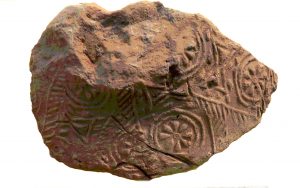Conférence organisée par le département des Antiquités orientales, musée du Louvre
Located in central Iran, Tepe Sofalin is a key site for understanding the Proto-Elamite period (late 4th millennium BCE). Excavations have uncovered an exceptional wealth of sealings, seal impressions, and tablets, revealing a highly developed administrative system. The imagery on these objects is remarkably diverse: human and animal figures (often goats near a “Tree of Life”), composite creatures (bull-men), architectural motifs, and geometric abstractions. Far from being mere decoration, these representations conveyed powerful messages – ownership, affiliation, identity, ideology, and beliefs. Used both as practical tools and symbols of authority, seals were integral to the social and cultural fabric of the time. The glyptic art of Tepe Sofalin thus offers valuable insight into the administration, economy, and ideological values of a remarkably organized protohistoric society.
Rouhollah Yousefi Zoshk (Associate Professor, Department of Archeology, Faculty of Literature and Human Science, Varamin-Pishva Branch, Islamic Azad University, Varamin, Iran) & Morteza Hessari (Associate Professor, Iranian Centre for Archaeological Research, Tehran, Iran)
Centre Dominique-Vivant Denon (Musée du Louvre, Porte des Arts)
Sur inscription : programmation-centre-vivant-denon@louvre.fr
Seal impression from Tepe Sofalin


Leave a Reply
You must be logged in to post a comment.